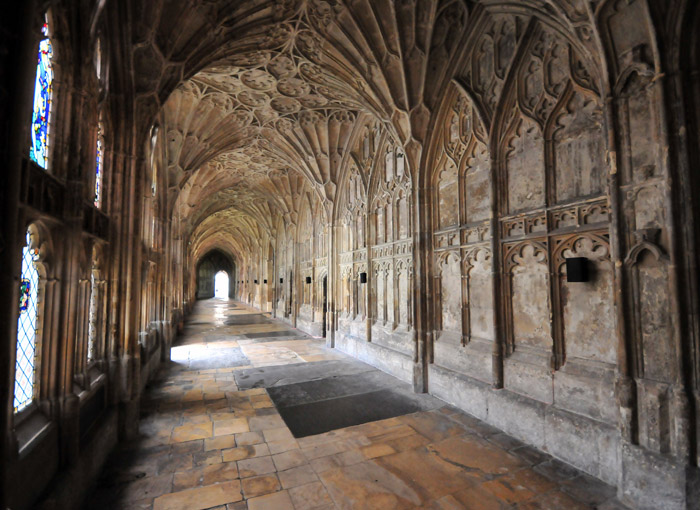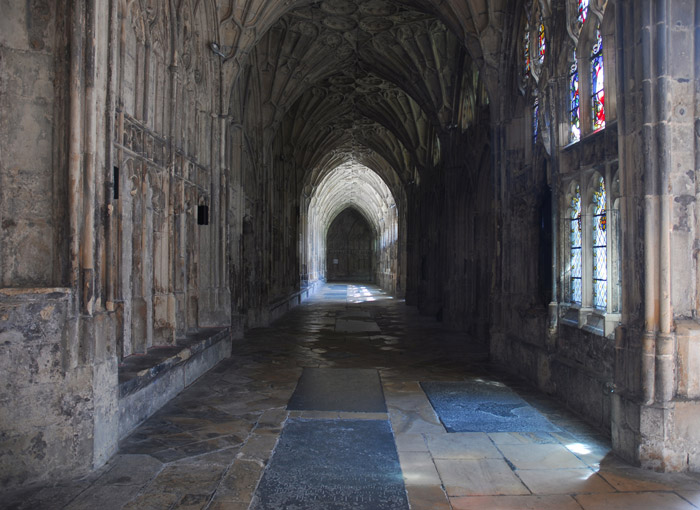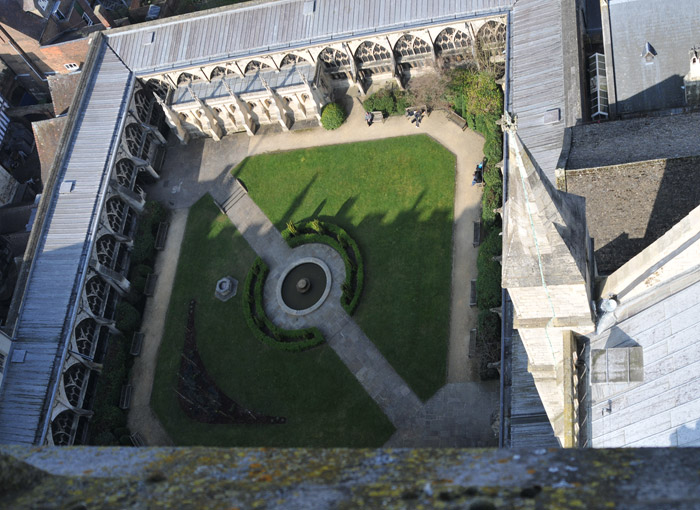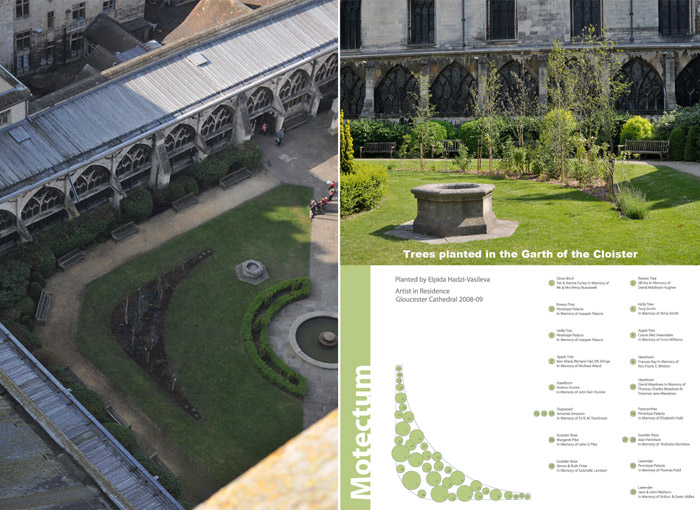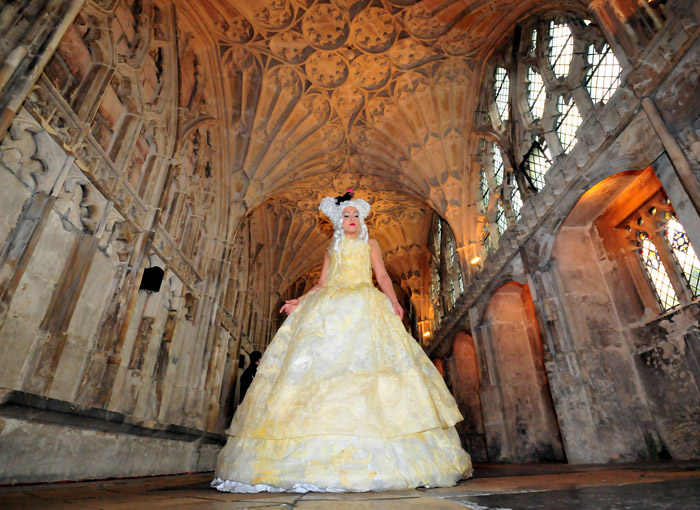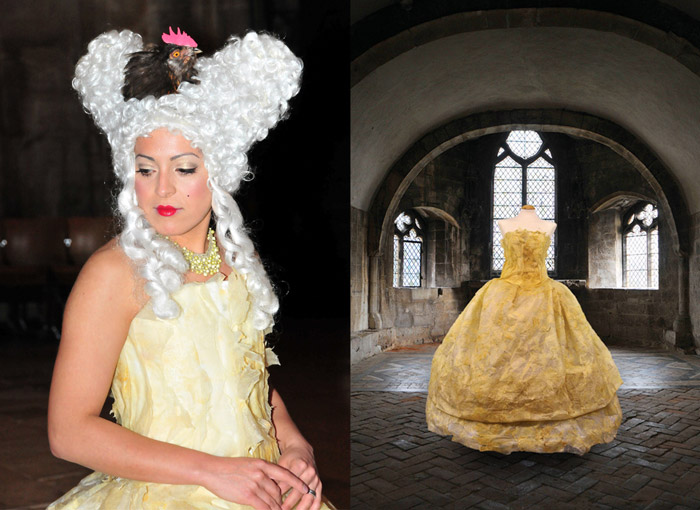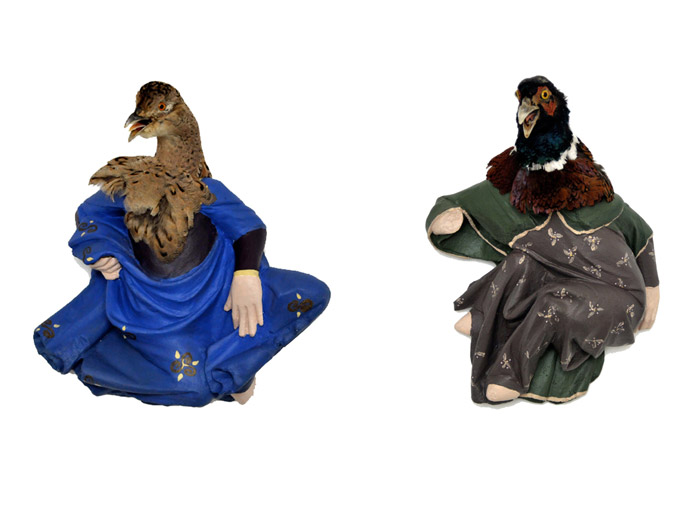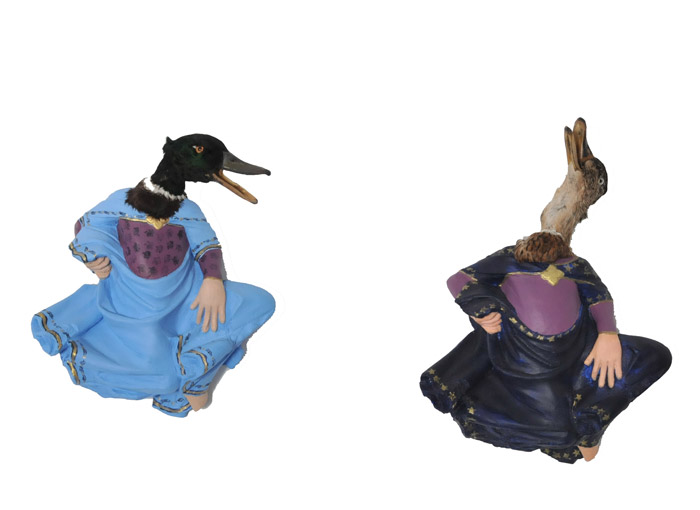Motectum
Motectum was a temporary sound installation created during a year-long residency at Gloucester Cathedral. It was constructed from forty individual sounds, played by forty speakers around the cloisters at the cathedral. Thirty-two of the speakers played recorded sounds of birdcalls and Gregorian chants, sung by the Cathedral choir; 4 speakers transmitted live bird songs from the Garth (garden) of the cloisters, and 4 other speakers relayed birdsong from nearby Highnam Woods – famous for its nightingales.
The sound installation used the structure of Thomas Tallis' remarkable forty-voice Spem in Alium. As visitors moved through the space, the voices mixed with the sound of birds. Each human voice was matched to particular birds. Each of the 4 sides of the cloisters represented one of the four main natural areas of the county of Gloucestershire – the Forest of Dean, Severn Estuary and Vale, Cotswold Hills, and Cotswold Water Park - and its songs were from birds associated with that particular area.
As part of the residency Elpida also worked closely with the community to develop a sanctuary that would remain and continue to evolve beyond her residency. Native trees and shrubs were planted in the Garth to give good cover for birds to enter, hide and feel safe. The artist is indebted to the community of the Cathedral for donating the trees, and the staff and students of Landscape Architecture at the University of Gloucestershire for their generous help planting the trees and shrubs.
Another element of the residency was the creation of Angels I-XL, which was formed of 20 paired (male and female) sculptures combining taxidermy birds with architectural decoration. The Pheasant and the Mallard duck are regarded as everyday and familiar, but by presenting these creatures as part taxidermy, part plaster cast - taken from the original 16th century angels at Gloucester Cathedral - they became like museum pieces. They were also intended to draw attention to critical ecological issues and the consequences of our inaction on the processes that affect everyday habitats around us.
The opening of Elpida’s exhibition at the residency end was marked with a performance by Artist Mitra Memarzia. The performance involved her unexpected and silent visit of the Cathedral cloisters and gardens, walking and enjoying the sounds in the space. Although the cloisters where full of visitors, she was a loner from another time and place, seen wearing a gown made out of chicken skins, to combine ideas of the discarded and the ceremonial.
The Artist-in-Residence took place 2008-2009 and was hosted by the University of Gloucestershire, but based at Gloucester Cathedral. A CD and a publication with essays by Dr Tracey Warr and Keran James is available for sale.
Supporting organisations:
- University of Gloucestershire
- Gloucester City Council
- Gloucester Cathedral Choir
- ArtSway
- Wildlife Sound Recording Society
- North Cotswold Ornithological Society
- Photo: John Ryan and Elpida Hadzi-Vasileva
- Video: Alice Forward

